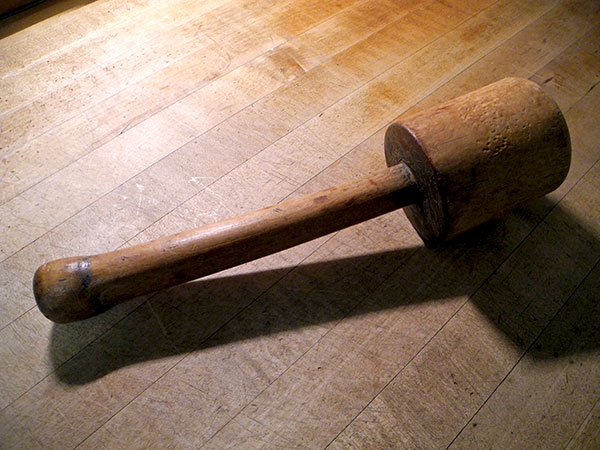I think what I prepared here was a hybrid of a dish enjoyed in several cultures, and claimed by at least two.
Wiener schnitzel is the national dish of Austria, even though, by European standards, its history there doesn’t seem to go back very far. Austria, and especially Vienna, may not like being reminded of this, but documentary evidence indicates that its iconic thin, breaded and pan fried veal cutlet was apparently known as “Lumbolos cum panitio“, or ‘Milanese cutlet’, almost 700 years earlier than its first association with the Habsburg capital, where it became known as ‘Wiener Schnitzel“, and remains a star today. In fact, and as usual, I’m inclined to agree with the antiquarians, who point out that a recipe of its description appeared in the late Roman cookbook, ‘Apicius‘, a work which remains in print today (partly, I like to imagine, for giving the world the breaded veal cutlet, even if its author might have himself borrowed it from another).
Cotoletta alla Milanese, the Milan version of this dish, which may have been the source for the Viennese, includes the rib bone; Palermo apparently brushes it with lard, then pan grills it, flavoring it along the way with oregano and/or parmesan cheese. Okay, I’ve now given up on trying to achieve anybody’s idea of authenticity, and will forevermore just aim for great pleasure.
- two reasonably-thick bone-in veal rib chops from Eataly (from milk-fed calves, humanely raised, group-housed, from Amish and Mennonite farms in Lancaster, Pennsylvania), hammered with a mallet, by the butcher and later continued further by me, using an antique wooden kitchen mallet I don’t get to work with often enough (see image below), until the veal was reduced to a thickness of about a quarter of an inch, sprinkled with a little lemon juice, and salted, on both sides, dipped in whole wheat flour first, then in a bowl of whipped egg, and finally in homemade bread crumbs, then chilled for a half hour before being placed in hot lard (labelled ‘Morrell Snow Cap Manteca’, from Eataly, which I later strained and placed the fat in the refrigerator for further duty) inside two large cast iron enameled pans, cooked for about 2-3 minutes on each side, removed and dabbed dry on paper towels, served on two oval platters with thin slices of lemon
- a small Kopfsalat, or Blattsalat of ‘Living Baby Lettuce’ topped with red amaranth sprouts, both from Radicle Farm, simply dressed with a white vinegar, an equal amount of good olive oil, a pinch of turbinado sugar, salt, pepper. and a little chopped parsley from Paffenroth Farms
- a Tomatensalat, as a side dish, of red and yellow heirloom tomatoes from Berried Treasures, sectioned, mixed with good olive oil, salt, pepper, Thai basil from a Friend’s garden in Garrison, slices of tiny scallions from Tamarack Hollow Farm, and garlic chive flowers from Paffenroth Farms, then let sit for about 30 minutes to mix the flavors
- the large oval plate was early Homer Laughlin, from a huge stash of antique American and English ironstone, in many forms, which I’ve had – and used – for almost 50 years
- the wine was an Austrian rosé, Walter Buchegger Rose Pinot & Co Niederösterreich 2014
- we finished the meal with a bowl of Mars grapes from Troncillito Farm
- the music was Mozart’s ‘Die Zauberflöte’, performed by René Jaco
yeah.

